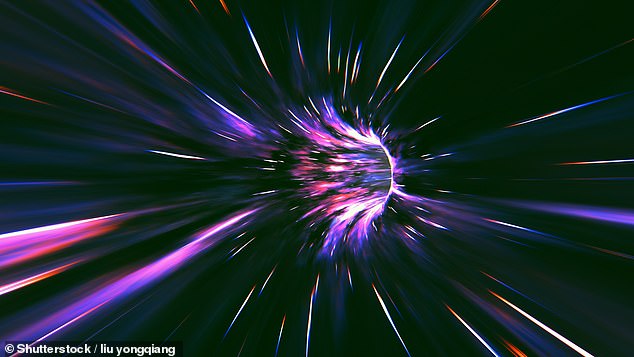
Space, often perceived as an empty void, is now revealing its intricate structure through groundbreaking research. Scientists have uncovered evidence of an "interstellar tunnel" system that connects our solar system to distant stars, challenging previous understandings of the interstellar medium. This discovery, made possible by advanced X-ray telescopes, sheds light on the dynamic processes shaping our galaxy and the environment in which our solar system resides.
Mapping the Interstellar Medium with X-Ray Telescopes
Researchers at the Max Planck Institute meticulously analyzed vast amounts of data collected by the eROSITA X-ray telescope, launched in 2019. Supplementing this data were measurements from the earlier ROSAT X-ray telescope, launched in 1990. This comprehensive dataset allowed them to create the most detailed X-ray map of the universe to date, revealing subtle yet significant features previously obscured by the Earth's atmosphere and limitations in earlier technology.
The eROSITA telescope, positioned approximately 1.5 million kilometers from Earth, is uniquely capable of detecting faint traces of radiation without atmospheric interference. By combining eROSITA's data with ROSAT's historical measurements, scientists were able to discern a clearer picture of the hot, low-density plasma that permeates interstellar space.
The Local Hot Bubble and Interstellar Tunnels
The analysis revealed that our sun is situated within a pocket of hot plasma, approximately 300 light-years across. This region, known as the "Local Hot Bubble," is believed to be a remnant of supernovae explosions that occurred between 10 and 20 million years ago. Supernovae, the cataclysmic deaths of massive stars, generate intense shockwaves and heat, leaving behind vast cavities of hot, low-density plasma.
The new research goes further, indicating that the Local Hot Bubble is not an isolated structure. Instead, it is connected to other regions of space via vast "interstellar tunnels." One such tunnel extends toward the constellation Centaurus, effectively creating a gap in the cooler interstellar medium. Another tunnel links our solar system with the constellation Canis Major. These tunnels are hypothesized to be part of a larger, branching network connecting different star-forming regions throughout the galaxy.
The Galactic North-South Temperature Discrepancy
The sensitive measurements also revealed an intriguing asymmetry in the Milky Way. Researchers observed that the Galactic North is significantly cooler than the Galactic South. This suggests that the Local Hot Bubble is expanding away from the Galactic Disc, moving in the direction of least resistance. This observation supports earlier findings from the ROSAT survey but provides a more detailed understanding of the Local Hot Bubble's dynamics.
Stellar Feedback and the Shaping of Galaxies
The interstellar tunnel network is thought to be maintained by the continuous cycle of star formation and stellar death. Supernovae explosions and powerful stellar winds from newly formed stars inject energy into the interstellar medium, creating and sustaining these tunnels. This process, known as "stellar feedback," plays a crucial role in shaping the structure of galaxies.
Supernova shockwaves compress surrounding gas and dust, creating regions where new stars can form. These young stars then emit jets of hot gases and radiation, further shaping the interstellar medium and potentially connecting to other star-forming regions. This ongoing cycle of energy input and redistribution contributes to the complex and dynamic nature of the interstellar medium.
Implications for the Solar System's Origins
This research offers fascinating insights into the origins and history of our own solar system. The findings suggest that our sun did not form within the Local Hot Bubble but entered it relatively recently, by chance. This implies that the sun's current location within the Local Hot Bubble is a temporary situation as it continues its journey through the Milky Way.
Dr. Gabriele Ponti notes, "Another interesting fact is that the sun must have entered the LHB a few million years ago, a short time compared to the age of the sun [4.6 billion years]. It is purely coincidental that the sun seems to occupy a relatively central position in the LHB as we continuously move through the Milky Way." This underscores the dynamic nature of our galactic neighborhood and the ever-changing environment in which our solar system exists.

No comments:
Post a Comment